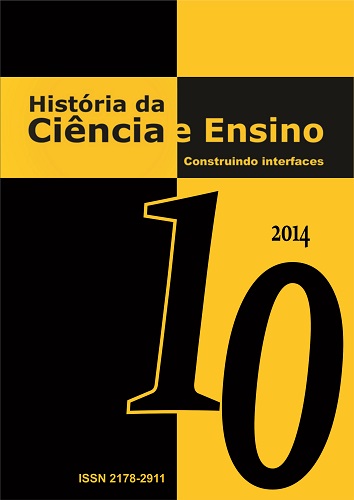A assimetria histórica entre as técnicas e o desenvolvimento do conceito de área na Antiguidade
Resumo
Resumo
Nosso objetivo, com este trabalho, é analisar, de maneira didática e por meio de uma sequência de exemplos provenientes de diferentes momentos da História da Matemática, as assimetrias entre o desenvolvimento das técnicas e da construção do conceito de área de figuras planas na Antiguidade. Apresentaremos resultados parciais, que prosseguirão até a formalização do conceito de integração. Acreditamos na relevância dessa investigação como construção de um processo educativo baseado em uma teia de reflexões. Entendemos, como Brolezzi, que “a ordem lógica mais adequada para o ensino de Matemática não é a do conhecimento matemático sistematizado, mas sim aquela que revela a Matemática enquanto Ciência em construção”[1], que pode ser explorada pelas mediações entre a técnica e a elaboração dos conceitos. Encontramos suporte teórico de Radford e Furinghetti[2]. Considerando tal motivação, fizemos um recorte bibliográfico destacando exemplos de cálculo de áreas tendo em perspectiva a questão de pesquisa: “Quais e como aconteceram, ao longo do tempo histórico da Matemática, as assimetrias entre as técnicas e os conceitos relativos ao cálculo de áreas, gerando informações que possam ser exploradas como recurso em sala de aula.” Nesse percurso, observamos a crescente sofisticação das técnicas que levou à evolução do conceito até as primeiras ideias de integração.
Palavras-chave: Integral; Áreas; História; Técnica; Conceito.
Abstract
Our goal with this work is to analyze, in a didactic way and through a sequence of examples from different moments in the history of mathematics, the gap between the development of techniques and the construction of the concept of area of plane figures in Antiquity. We present partial results, which will continue until the formalization of the concept of integration. We believe in the relevance of this research as construction of an educational process based on a web of reflections. We understand, as Brolezzi, that "the most appropriate logical order for teaching mathematics is not a systematic mathematical knowledge, but one that reveals the Mathematics Science while under construction"[3], which can be exploited by mediation between technique and elaboration of the concepts. We find theoretical support in the works of Radford and Furinghetti[4]. Given this motivation, we made a cutout literature highlighting examples of calculation of areas taking into perspective the research question: "What happened and how, over time history of mathematics, the gap between the techniques and concepts relating to the calculation of areas, generating information that can be exploited as a resource in the classroom”. In this way we observe the increasing sophistication of the techniques that led to the evolution of the concept until the early ideas of integration.
Keywords: Integral; Areas; History; Technique; Concept.[1] A. C. Brolezzi, “A Arte de Contar: Uma Introdução ao Estudo do Valor Didático da História da Matemática” (dissertação de mestrado, USP, 1991).
[2] “Historical Conceptual Developments” e “Perspectiva Epistemológica Sociocultural” (L. Radford & F. Furinghetti, “Historical Conceptual Developments and the Teaching of Mathematics: From Phylogenesis and Ontogenesis Theory to the Classroom Practice,” in Handbook of International research in Mathematica Education, ed. L. English, 631-654 (New Jersey: Lawrence Erlbaum, 2002), apud A. Miguel & M. A. Miorim, História na Educação Matemática: Propostas e Desafios (Belo Horizonte: Autêntica, 2008), 80).
[3] A. C. Brolezzi, “A Arte de Contar: Uma Introdução ao Estudo do Valor Didático da História da Matemática” (dissertação de mestrado, USP, 1991).
[4] “Historical Conceptual Developments” e “Perspectiva Epistemológica Sociocultural” (L. Radford & F. Furinghetti, “Historical Conceptual Developments and the Teaching of Mathematics: From Phylogenesis and Ontogenesis Theory to the Classroom Practice,” in Handbook of International research in Mathematica Education, ed. L. English, 631-654 (New Jersey: Lawrence Erlbaum, 2002), apud A. Miguel & M. A. Miorim, História na Educação Matemática: Propostas e Desafios (Belo Horizonte: Autêntica, 2008), 80).


